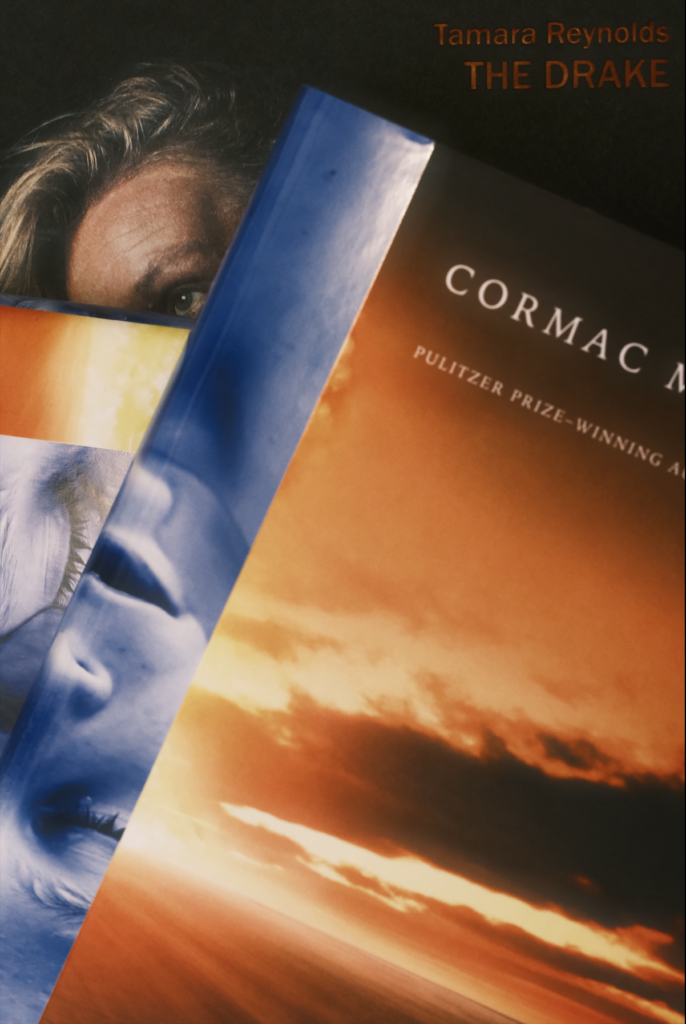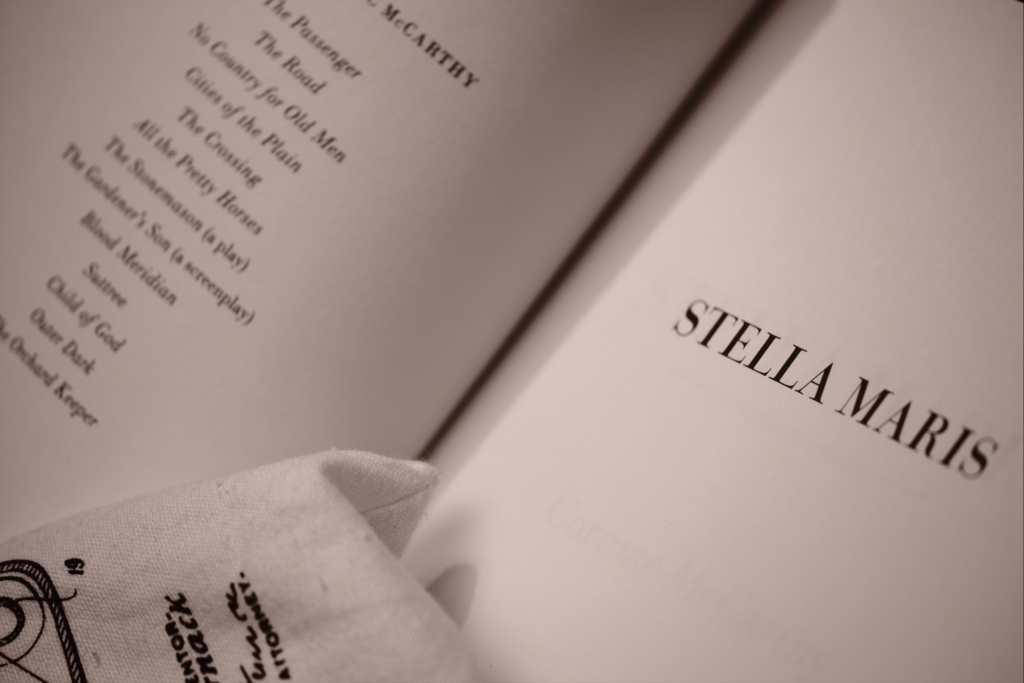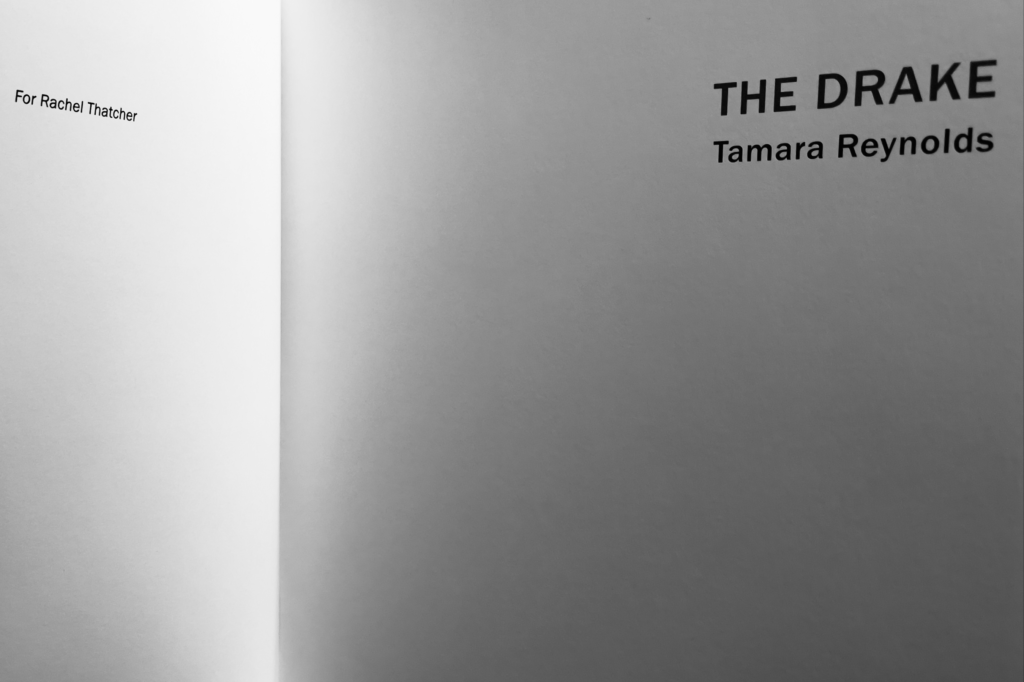Review of Cormac McCarthy’s The Passenger and Stella Maris
&
Tamara Reynolds’ The Drake
2,586 Words
The two recent releases from Salman Rushdie and Cormac McCarthy presented a challenge to readers. Like those who rush to their screens for HBO’s Sunday night programming out of fear of having details from the show ruined by every facet of the internet, readers faced a similar anxiety with these works. Readers could not open any of their newspapers or monthly magazines and not run the risk of reading a review that revealed too much. I managed to navigate this minefield quite well and avoided any spoilers for the books, but I saved the articles to read later. Though there was be no need for me to do so with Mr. Rushdie’s work, this was a blessing for Mr. McCarthy’s The Passenger and its sequel Stella Maris.
 Most reviews focused on the lowest hanging fruit, which was Mr. McCarthy’s focus on mathematics and sciences throughout his two novels. The author had repeatedly in the past claimed that he writes what he knows, and he went out of his way to move to New Mexico so that he could be at the Santa Fe Institute. There, his days are spent conversing with some of the world’s most brilliant minds in varying scientific disciplines. The other group of reviews seemed to focus on some of his characters’ shortcomings, and used that as a vaulting platform to criticize Mr. McCarthy’s entire career. However, what stood out to me as I was reading both of his books was the matter of the dangerous cocktail of when genius intersects with trauma. On top of reviewing both of these novels, we will explore this concept by using real life examples, and contrasting it with another important work, Tamara Reynolds’ The Drake, to see how repeated trauma to those who are not fortunate to have the opportunities that Mr. McCarthy’s characters had played out in real life.
Most reviews focused on the lowest hanging fruit, which was Mr. McCarthy’s focus on mathematics and sciences throughout his two novels. The author had repeatedly in the past claimed that he writes what he knows, and he went out of his way to move to New Mexico so that he could be at the Santa Fe Institute. There, his days are spent conversing with some of the world’s most brilliant minds in varying scientific disciplines. The other group of reviews seemed to focus on some of his characters’ shortcomings, and used that as a vaulting platform to criticize Mr. McCarthy’s entire career. However, what stood out to me as I was reading both of his books was the matter of the dangerous cocktail of when genius intersects with trauma. On top of reviewing both of these novels, we will explore this concept by using real life examples, and contrasting it with another important work, Tamara Reynolds’ The Drake, to see how repeated trauma to those who are not fortunate to have the opportunities that Mr. McCarthy’s characters had played out in real life.
About the Books
The first book in the series, The Passenger, can be quite hard to get into, but it is worth the effort. First, if the reader has not read any of the author’s previous works, they will have to contend with the lack of most punctuation. At first, this will result in a little confusion before settling the reader in for a period of fatigue as they put forward the extra effort required to make sense of the book. Second, each chapter starts with the very real and vivid schizophrenic spells that the main character of the second novel, Alicia Western in Stella Maris, suffers from. The first title’s main character is Bobby Western, whose sister, Alicia Western, starts every chapter with her hallucinations. Children to a brilliant scientist who worked on the Manhattan Project, both siblings were born with their father’s brilliant intelligence, but also were unrivalled to everyone else who graced the pages of both novels in terms of being physically attractive.
We are introduced to Bobby, affectionately called Western by those who know him, as he’s undergoing a salvage dive over a mysterious plane crash in the ocean. As a Master Scuba Diver myself, I was pleased with all of the detail the author included about the trade as it was a couple of decades ago. We soon learn about his physical beauty and his brilliance and that after coming into some money, he even spent some time overseas as a race car driver.
The salvage site which Western dove at the start of the novel turns out to derail his life, which, when we join him, has already degraded to a very depressing point. Visits from mysterious men in his apartment, then to also be put under investigation by federal agents, quickly sends Western down a spiralling path. This path we learn in the second novel was initially set into motion by a shared trauma with his sister. Their mutually destructive paths were cemented when the two siblings came into their large inheritance.
Some reviewers and those with whom I have spoken about both novels made the observation that the siblings were Mary Sue-type characters and that these conveniently brilliant and beautiful people would never exist in the real world. Accusations of laziness seemed to have been the easiest route of criticism during these conversations, and sadly they are wrong about these humans existing. At the Santa Fe Institute, where Mr. McCarthy spends his days, the chances of bumping into someone who is an expert in many fields are rather high. Factor in that there may be a chance that they could be deemed as attractive as well does not put such characters out of the realm of possibility. The fact that the two siblings seem to have everything handed to them, yet everything manages to fall apart for them, is the entire point of the book.

The second novel takes place in the institution named Stella Maris, and we join Alicia Western during her sessions with her therapist. After admitting herself, we learn that Alicia is a generational genius in mathematics, far outclassing her brother. We come to better understand her relationship with her brother, her hallucinations, and why she admitted herself. The second novel is filled with conversations about theoretical and higher-level mathematics and concepts about dimensions which the therapist surprisingly keeps up with. At certain points, the reader can be made to believe that the therapist himself may be a hallucination because of this. Even though the second novel essentially takes place in one room, it makes for quite an exciting read for it enriches the first novel.
Mr. McCarthy ran the risk of making the first novel mysterious, vague, and led by Bobby Western who is frustratingly aloof. The second novel shines a bright light as to why he stumbles from one problem on to the next without ever making a real attempt to solve them, and the fact that schizophrenia is hereditary and runs in families goes on to explain a lot of what may have discouraged readers. All of those frustrations are rewarded in the second novel, and are well worth sticking with the series.
These two novels go on to show that it is possible to have everything seemingly handed to you on the surface and that a life of misery lies underneath. Both siblings were isolated from society from an early age, having only each other to turn to until they couldn’t. And that is when things fall apart as they are allowed to pursue their destructive interests with their newly found inheritance.
If you have spent a long period of time working with people who are deemed to be brilliant by society, you tend to learn a lot. You learn about their field, their approach to problem-solving, and in the case of musical genius, insights in music theory and practicing one’s instrument that make seemingly impossible problems suddenly within grasp. More importantly, you will learn about the life of isolation that they have led. In some instances, it is possible to be born into a family, industry and community that embraces such gifts, but usually, from an early age, the opposite is true. Forced into practice rooms with their instruments or into their studies by their parents as their classmates seize on the opportunity to become properly socialized, the world can be a very lonely place for the brilliant.
Many years ago I had the privilege of managing a team which included one brilliant mathematician. His level of brilliance still did not come close to those depicted in the Western siblings, and more than a decade on I know for a fact that this mathematician would not be able to contribute anything of worth to the Santa Fe Institute. The primary reason that my employee never reached the professional heights of having papers and work accomplished of note was not due to his lack of intellect but for his lack of socialization. At the start of his employment, I was invited to his younger sister’s birthday party, and here I got a glimpse into who he was. At the office, and in academic environments, this mathematician was harsh, rude, and difficult to get along with. There would be moments when others would get a glimpse of his gentler side, but these instances were few and far between.
On that late October evening at his sister’s party, I came to learn from his mother that the mathematician was always isolated from his classmates while growing up because he was different. The majority of his social interactions would also be in defending his sister, who had autism, from bullies and people who mistakenly would make her feel uncomfortable. I had never seen such a strong bond between two siblings as I did on that evening, and I began to understand how and why the employee was who he was and that he needed nurturing in the workplace. There were a few instances where his negative behaviour would flare up, and instead of taking any punitive measures, I made sure to put in the time with him in private and in front of others to make him feel comfortable and that his concerns were heard. His demeanour did start to soften, and he did develop a friendship with a co-worker during my short stay at that company. I would only stay with that company for a few more weeks before I moved on, but after bumping into him a couple of years later, he seemed more distant and untrusting of his surroundings and of the people around him. A lifetime of abuse and trauma can lead to constant suspicion and inflamed tempers. As I had learned, however, a little time and genuine nurturing will go a long way when dealing with a brilliant mind who had a difficult past.
Why these Books are Important
Note: this last section covers trauma and uses scientific terms, all of which will be kept to their simplest forms and fully explained where possible.
Trauma is not a singular phenomenon or experience. It takes on many forms, finds its roots in many different sources, and can have such a varying impact on any living creature that we tend to oversimplify the term for the most easily recognizable examples. The main characters in Mr. McCarthy’s novels share the most critical steps of care with the very real subjects in Tamara Reynolds’ photobook, The Drake. This step in care is of support after the traumatic event occurs. These events are called high-cost negative events, and if the person in question is not equipped to handle the initial trauma, the chances of them recovering from any reoccurring high-cost negative events are highly unlikely.

There are three steps of trauma and how they are treated. There is pre-trauma, where factors such as the patient’s environment, prior psychopathy, diathesis, and neurological factors are considered. Then there is peri-trauma, which depends on the duration and severity of the trauma, and when the incident itself is perceived to have ended. Lastly, there is post-trauma, in which the patient has access to resources, social support, and treatments that focus on cognitive patterns and physical activity. Methods of treatment such as Stress Inoculation Training and Cognitive Processing Therapy are usually employed in this phase to help the patient be equipped to better live with their trauma(s).
The fictional characters in Mr. McCarthy’s novels were stuck in their peri-trauma phase with the ample opportunity that was granted to them right after their shared trauma. They never had the chance to enter a proper post-trauma phase and period where they could not only acknowledge the significance of their trauma but be equipped to handle better the stimuli that would incite a traumatic response long after the initial high-cost negative event.
The subjects in Mrs. Reynolds’ photo essay were victims of abuse and substance addiction, and all lacked the resources to seek proper care. This 79-page masterpiece takes place by the famous Drake Motel in Nashville, Tennessee. This motel was used as a filming location for many movies, but from 2015-2019, the motel and its surrounding area were run down and home to those pushed to the margins of society. During her four years of documenting the area and its inhabitants, Mrs. Reynolds’ gained their trust by not simply hanging around until she became a familiar face, but by having a personal insight into the troubles of those she carefully was documenting. I highly recommend diligently going through her photographs and taking note of how they are sequenced, and then reading the insightful essay at the end. Her subjects are stuck living in an environment where seeking such help is not possible. Some have shown great awareness about their situation and how they not only are working within the systems that are available for them but how they accept and can foresee the consequences of the lives that they lead.
Final Thoughts
Both bodies of work were released in 2022, almost three years after the entirety of the human population was exposed to great mental duress, suffering, and trauma from the pandemic and all of the pre-existing circumstances that were made worse due to COVID-19. Both were works that started long before the pandemic, but the issue of trauma, how to recognize it, and how to deal with it is more important now than ever. Increasingly, those who have had a particularly hard three years are misreading normal interactions as greyzone activities and behaviours (subversive actions taken by hostile individuals/states that fall below the threshold of normal conflict), and people are being mistreated as a result.
Regardless of how fortunate or unfortunate someone seems, chances now are rather high that they are harbouring traumas ranging in severity, and we need to take better care of each other. When someone has an outburst that seems like it has come from nowhere, instead of retaliating, retreat and revisit the topic if possible at a later date. Not all matters need to be resolved, either. The mental health of the person standing in front of you is more important than most scenarios as long as they do not lead to further damage or harm. This does not mean that we need to walk on eggshells around each other, it simply means that we need to be more mindful, and know that in most situations if someone misbehaves, there is a strong reason behind it that we are not aware of.
Mr. McCarthy and Mrs. Reynolds’ books give us valuable insight into the vast range of situations in the human condition that can carry various forms of trauma. Naturally, when we are faced with someone who is or has gone through a difficult period in their lives, we tend to immediately compare their situation to ours, and find a way to diminish it through competition. That or if normal members of society view them as a threat, as in the case of those who are in The Drake, we dehumanize them and find ways not to acknowledge their suffering. The days of harmlessly contesting that we have our own families, careers and concerns and that we do not have the bandwidth to care for others and treat them humanely have ended. For it is no longer those who reside on the extremes of the human existence that suffer from damaging trauma, we all have. Trauma has a way of impacting the lives of those involved with the high-cost negative event, and those who experience its splash damage over time. By continuing to ignore the suffering others, the prolonged period of stress and trauma that we experienced throughout the pandemic will incur damage far past what we are prepared for. All three of these books are worth owning, reading, and sharing for the reasons above, and they all come highly recommended.